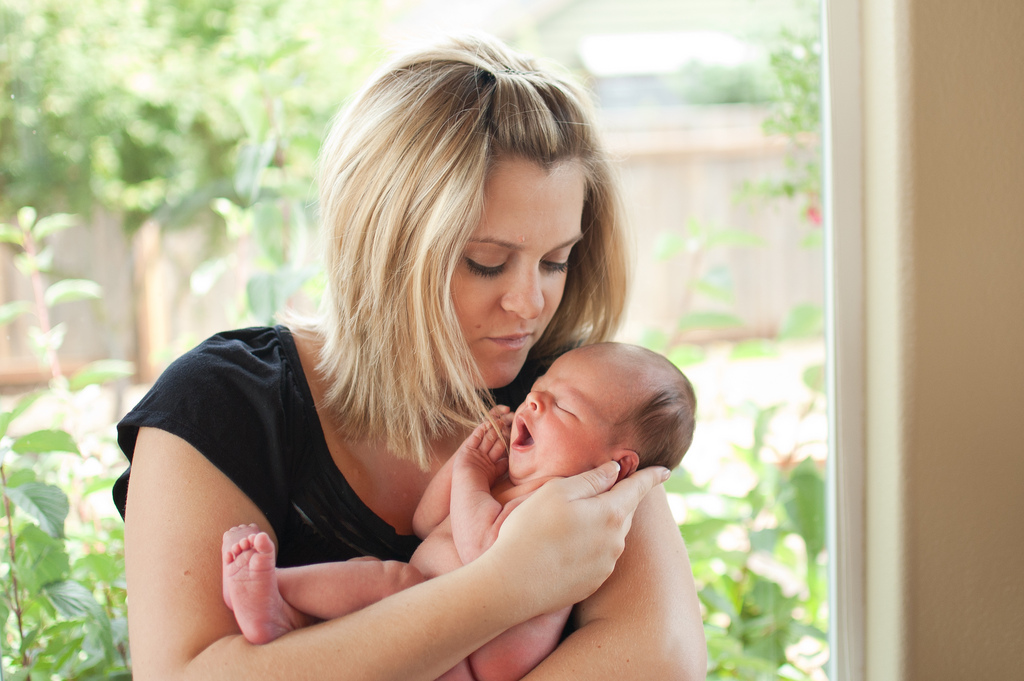Babies seem to inexperienced young mothers to be incredibly weak and delicate creatures, which is why at first there is a fear of holding the baby in your arms once again. Some are afraid of causing accidental injury to the baby, others are embarrassed by their own awkwardness. There is nothing to be afraid of, and experience comes only with practice. But the basic theory of how to hold a newborn correctly will have to be studied.
There is still an opinion, zealously imposed by the older generation, that a baby should be held as rarely as possible. And some mothers follow this advice in fear that they will harm the baby by making him “tame.” It is much more beneficial for a baby to be held in your arms than to lie alone:
- The closeness of the mother and direct contact strengthens the attachment between her and the baby.
- There is a faster knowledge of the world around us and a safer acquaintance for the baby with everything new.
- The newborn develops muscles, which contributes to good physical development.
How to properly pick up a baby
There are no special wisdom in this science, but you must adhere to certain rules in order to accidentally cause harm:
- The baby should be picked up with both hands at the same time;
- One adult’s palm should support the back of the head, and the second should be located under the baby’s bottom.
 The movements are by no means abrupt, but calm and smooth. And to return the newborn back to the crib, you need to lean forward with your whole body. Release your hands only when the baby is completely lying on the surface.
The movements are by no means abrupt, but calm and smooth. And to return the newborn back to the crib, you need to lean forward with your whole body. Release your hands only when the baby is completely lying on the surface.
Types of hand positions
Various hand positions are beneficial not only for babies, but also for adults. This way, mom’s hands won’t get tired, and the baby can look around and discover something new. In addition, each individual method uses different muscle groups:
- Cradle. The classic position is in which the newborn's head lies on the crook of the elbow of one arm. With your second hand you need to hold the torso and butt with the legs. The baby is pressed with his tummy to his mother's belly. This position is often used by mothers when feeding because of its convenience. However, you should change hands more often so that the baby’s head is alternately on the right hand, then on the left. This is an effective prevention of torticollis.
- Column. During a meal, air may accumulate in the baby's tummy, and... To provide the newborn with maximum support, he should be turned to face you, placing his chin on his shoulder. Hands hold the lumbar region and neck of the baby.
- Tummy. Impromptu “flights” in the arms of parents also have a beneficial effect on the development of the baby. The baby's chest should be placed on your open palm, placing the baby's chin on the elbow. The other hand should support the tummy by passing it between the legs. This pose helps strengthen the muscles of the neck and back.
- Little Buddha. The mother should hold the newborn by the chest with one hand, and support the legs and feet with the other. The hips separated at the correct angle are a guarantee that.
How to hold when bathing
The medical staff at the maternity hospital will tell you how to hold your newborn while bathing. However, it is important to adhere to the basic rule: you need to hold the baby by the butt and head. And make sure that your chin does not fall below the surface of the water in the bath.
When washing, there are some subtleties:
- The baby is positioned exclusively with his face up, his head lies on the crook of the adult’s elbow, and his body on the forearm.
- Hold the baby with one hand and wash it with the other.
- It is necessary to hold the newborn's hip with the hand on which he is located. This will allow the second leg to hang freely and open the washing area.
In the “face down” position, slightly older children wash themselves.
What not to do
Before holding a newborn, you need to familiarize yourself with the following precautions:
- It is forbidden to try to lift the baby by holding his wrists or hands, so as not to damage the children's fragile joints.
- Since the neck muscles are in a fragile state, the baby’s head must be supported.
- In any position, the baby should be held so that his legs or arms do not sag.
- When positioned vertically and carried in a column, maximum support is provided for the child's back. Excessive loads on a weak spine are harmful, and serious consequences are revealed only in preschool age.
- It is important to combine confidence with accuracy, avoiding pressing the baby to you with force.
It is useful to practice different carrying methods so that the newborn develops harmoniously and comprehensively.




